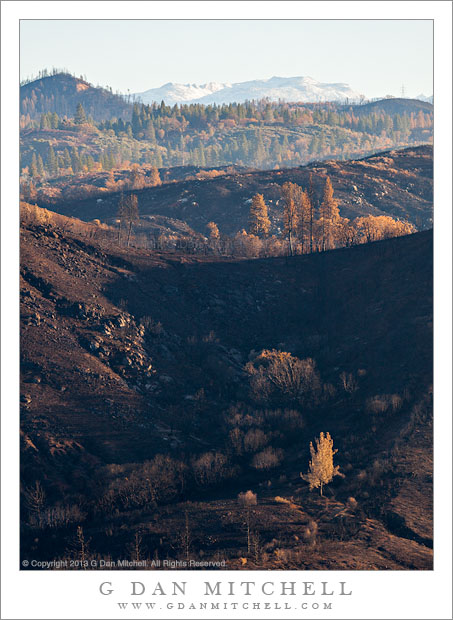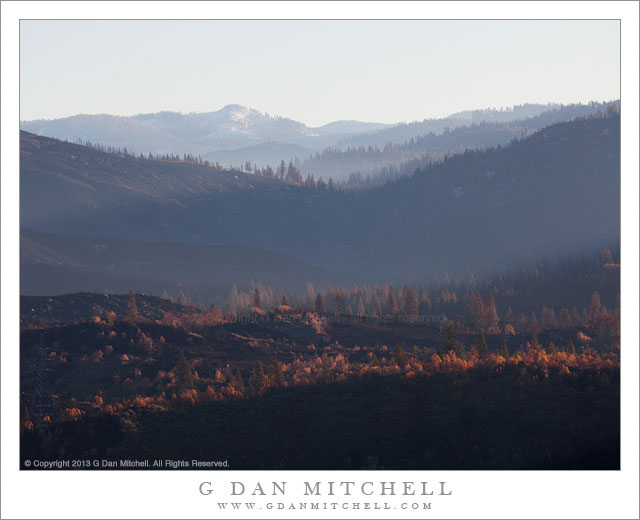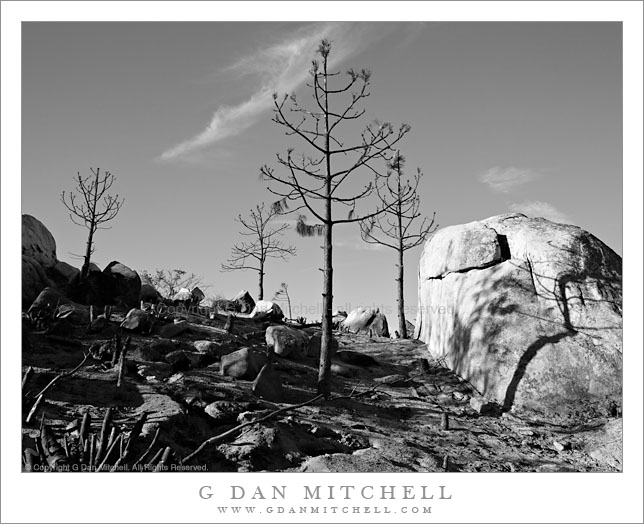
Rim Fire Burn Zone, Morning. Near Yosemite National Park, California. October 30, 2013. © Copyright 2013 G Dan Mitchell – all rights reserved.
An area near “Rim of the World” recently burned by the Rim Fire
Late this past summer one of the worst wildfires in the Sierra burned extensive areas near and within the northwest “corner” of Yosemite National Park. The “Rim Fire,” as it has come to be known (since it started near the “Rim of the World” overlook) came at a time of very bad conditions – in hot and dry weather, late in the season, and at the end of a second drought year in California. The first spread very quickly, and it took tremendous efforts to contain it – and full suppression took many, many weeks.
Since the fire burned in areas that I know very well from decades of travel through this part of the Sierra, I was anxious to see the extent of the damage. At first I thought I might get a chance in early September, when I traveled back and forth to the eastern Sierra to photograph fall colors. However, weather interfered – snow closed Tioga Pass Road and I ended up taking different routes across the range. Finally, at the very end of October, on a drive to Yosemite Valley I passed this way early in the morning. Overall, from what little I could observe, several things seem clear: the fire burned a very large area, some sections were very badly damaged and it will be a long time before trees grow there again, other sections were only lightly burned and a few were skipped over. This view, from the “Rim of the World” overlook, rises from the close charred hills above the Tuolumne River Canyon, across more distant ridges, and culminates at far peaks with a light dusting of early season snow. All of the conditions I described above are visible here – serious destruction in the foreground, a bit further in there are some trees that were burned by not killed, and far beyond there is forest that appears to have not been burned.
 G Dan Mitchell is a California photographer and visual opportunist whose subjects include the Pacific coast, redwood forests, central California oak/grasslands, the Sierra Nevada, California deserts, urban landscapes, night photography, and more.
G Dan Mitchell is a California photographer and visual opportunist whose subjects include the Pacific coast, redwood forests, central California oak/grasslands, the Sierra Nevada, California deserts, urban landscapes, night photography, and more.
Blog | About | Flickr | Twitter | Facebook | Google+ | 500px.com | LinkedIn | Email
Text, photographs, and other media are © Copyright G Dan Mitchell (or others when indicated) and are not in the public domain and may not be used on websites, blogs, or in other media without advance permission from G Dan Mitchell.


